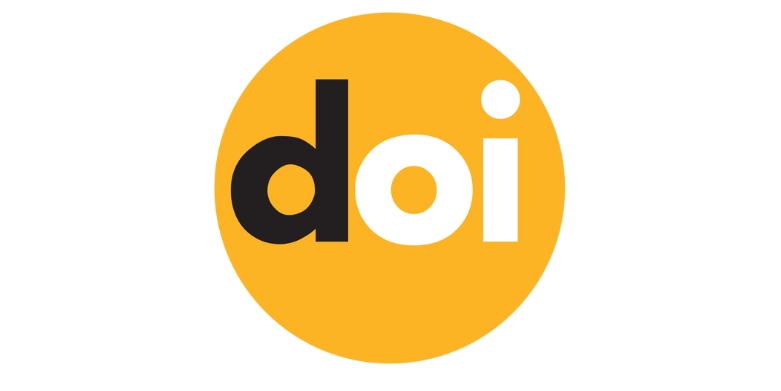Examining Social Media Communications, Brand Equity, Satisfaction and Loyalty Generated by Tourism
DOI:
https://doi.org/10.63053/ijmea.65Keywords:
Social Media - Brand - Tourism - Satisfaction - Loyalty - Brand ValueAbstract
The growth of social media technology is a global phenomenon in the current generation. Trivago, Booking.com, and TripAdvisor are popular social media apps, allowing companies and tourism sectors to promote brands for their customers (and develop and expand their relationships with customers beyond the services required). Also, customers participate in social media programs simultaneously and improve their relationships with brands. Therefore, these social media applications have very important marketing applications The studies conducted in the field of social media tourism that have examined the behaviors of customers The purpose of this study is to investigate social media communication, brand equity, satisfaction and loyalty generated by tourism Statistical analysis using SPSS and AMOS softwareThe findings of the research show that the capabilities of social networks affect the process of the tourist's experience of social networking and interaction with tourists and creating satisfaction for tourists also affect their intention to travel, but the special value of the tourism brand with maximum interaction is an attractive appearance and an important credit for tourists. The findings of the research show that the capabilities of social networks affect the process of the tourist's experience of the social network and interaction with tourists.
References
- Shirmohammadi, Yazdan, Jalalian, Seyed Eshagh, Mansouri, Samaneh (2020) The Effect of Urban Brand Image and Personality and Their Impact on the Attitude and Intention of Choosing a Tourism Destination, Urban Tourism Quarterly, Vol. 7, No.
- Dolan, R., et al. (2019). "Complaining practices on social media in tourism: value co-creation and co-destruction perspective." Tourism Management 73: 35-45.
- Iştin, A. E. (2020(. “Social Media Transforming Tourist Behavior”. A. Hassan, & A. Sharma (Ed.(. The Emerald Handbook of ICT in Tourism an Hospitality. Emerald Publishing Limited, Bingley, pp. 113-128. https://doi.org/10.1108/978-1-
- 83982-688-720201008
- Kim, S., & Park, H. (2013). Effects of various characteristics of social commerce (scommerce) on consumers' trust and trust performance. International Journal of Information Management, 33(2), 318e332
- Li, C., et al. (2019). "Veni, vidi, vici: The impact of social media on virtualacculturation in tourism context." Technological Forecasting and Social Change 145: 513-522
- Rodrigo Perez-Vega, Babak Taheri, Thomas Farrington, Kevin O'Gorman. (2017). On being attractive, social andvisually appealing in social media: The effects of anthropomorphic tourismbrands on Facebook fan pages. Tourism Management
- Rudez, H.N. and Vodeb, K. (2015). Students’ Use of Social Media during the Travel Process, Tourism and Hospitality Management, 21(2): 179- 190.
- Ruiz-Mafe, C., Martí-Parre~no, J., & Sanz-Blas, S. (2020). Key drivers of consumer loyalty to facebook fan pages. Online Information Review, 38(38), 362e380.
- Seo, E. J., & Park, J. W. (2018). A study on the effects of social media
marketing activities on brand equity and customer response in the airline
industry. Journal of Air Transport Management, 66, 36-41. statista.com.
- Tajvidi, M. Wang, Y. Hajli, N. Peter E.D. (2017). Brand value Co-creation in social commerce: The role of interactivity, social support, and relationship quality. Computers in Human Behavior
- Pich, C., & Armannsdottir, G. (2018(. “Political brand image: an investigation into the operationalisation of the external orientation of David Cameron’s Conservative brand”. Journal of Marketing Communications, 24(1(, 35-52
- Piewdang, S., Mekkamol, P., & Untachai, S. (2013(. “Measuring spiritual tourism management in community: A case study of Sri Chom Phu Ongtu Temple, Thabo district, Nongkhai province, Thailand”. Procedia-Social and Behavioral Sciences, 88(2013(, 96-107.
- Pipike, J. K. (2012) “Comparative study between Fiji and Papua New Guinea tourism development: Lessons to learn from Fiji”. Procedia-Social and Behavioral Sciences, 65(2012(, 192-198
- Usakli, A., & Baloglu, S. (2011). “Brand personality of tourist destinations: An application of selfcongruity theory”. Tourism Management, 32(1(, 114127
- Yetimoğlu, S., & Uğurlu, K. (2020) “Influencer Marketing for Tourism and Hospitality”. Hassan, A. and Sharma, A. (Ed.(. The Emerald Handbook of ICT in Tourism and Hospitality. Emerald Publishing Limited, Bingley, pp. 131-148. https:// doi.org/10.1108/978-1-83982-688-720201009
- Yu, Chung-En. & Sun, Runsheng. (2019) The Role of Instagram in the UNESCO's Creative City of Gastronomy: A Case Study of Macau, Tourism Management, Vol.75, No.10, pp. 257-268
- Wang, D. (2020). “Tourist bahavior and repeat visitation to Hong kong”. Tourism Geographies vol.6, No.1,PP.99-118.
- Zhou, C., Jones, C., & Munday, M. (2022). “Tourism inward investment and regional economic development effects: perspectives from tourism satellite accounts”. Regional Studies, 53(12), 1–12
Downloads
Published
How to Cite
Issue
Section
License
Copyright (c) 2025 Authors

This work is licensed under a Creative Commons Attribution 4.0 International License.








